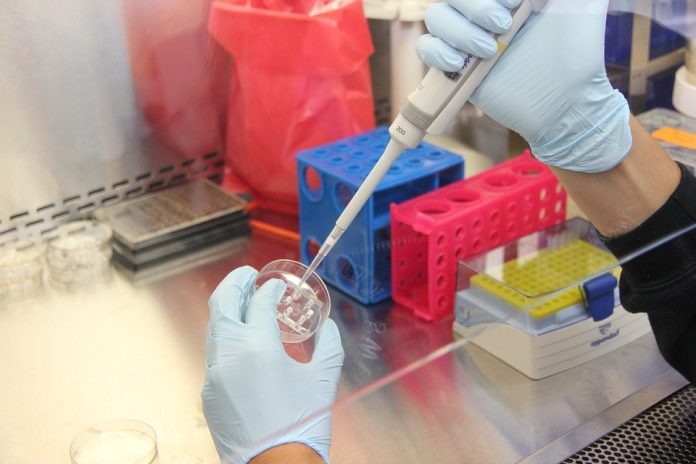Lab-grown meat or cultured meat is real meat produced outside of animals in a lab. Cells are taken from animals and grown in a lab to create muscle tissue.
Did you know? The first lab-grown burger was eaten in 2013. But unfortunately, it cost over $330,000 to make and took two years to grow!
Advantages
– Lab-grown meat is environmentally friendly because it doesn’t require land, water, or feed to produce
– Artificial meat doesn’t contribute to greenhouse gas emissions
– Artificial meat is humane because animals aren’t slaughtered to produce it
– Artificial meat is safe because it isn’t exposed to the same risks of contamination as traditional meat
Disadvantages
– Artificial meat is expensive to produce
– Artificial meat is not yet available to consumers
– Artificial meat may be perceived as unnatural
So, what do you think? Would you try lab-grown meat?
Artificial meat is a new technology that is still being developed. It has the potential to be a more environmentally friendly and humane option for meat production, but it is currently costly. Only time will tell if lab-grown meat will become a mainstream food source.
What are lab-grown meat and its benefits?
Lab-grown meat, also known as cultured meat or in vitro meat, is meat that has been grown in a lab rather than on a farm. It is made from animal cells cultured in a lab and then combined to create a lab-grown burger.
Supporters of lab-grown meat say that it is a more sustainable and ethical alternative to traditional meat production. They argue that lab-grown core produces fewer greenhouse gases, requires less land and water, and causes fewer animal deaths.
Critics of Artificial meat say that it is not yet as affordable or tasty as traditional meat and could have unforeseen environmental impacts. They also argue that lab-grown hearts do not solve conventional meat production’s ethical problems, such as animal cruelty.
What are the benefits of lab-grown meat?
There are many potential benefits of lab-grown meat, including:
- First, lab-grown meat is more sustainable than traditional meat production.
- Artificial meat requires less land and water than conventional meat production.
- Third, Artificial meat causes fewer animal deaths than traditional meat production.
- Fourth, Artificial meat could be more affordable than traditional meat.
- Finally, Artificial meat could be tastier than traditional meat.
- However, Artificial meat does not solve the ethical problems associated with traditional meat production, such as animal cruelty.
- Artificial meat could have unforeseen environmental impacts.
How can lab-grown meat prevent animal suffering, and is artificial root is safe?
It has been proven that Artificial meat is safe for human consumption. In 2013, the world’s first lab-grown burger was cooked and eaten by Dutch researcher Professor Mark Post and his team at Maastricht University. The burger was made from lab-grown beef muscle cells and tasted similar to traditional beef.
Lab-grown meat can also prevent animal suffering by providing an alternative to traditional meat production. In conventional meat production, animals are raised in cramped conditions and often subjected to cruel treatment. By contrast, lab-grown meat can be produced without the need to harm or kill any animals.
Is lab-grown meat environmentally friendly?
Lab-grown meat has the potential to be more environmentally friendly than traditional meat production. The lab-grown heart requires less land and water than conventional meat production, producing fewer greenhouse gases. Lab-grown meat could also help reduce deforestation, as it does not require clearing land for grazing animals. However, the lab-grown heart does have the potential to cause unforeseen environmental impacts, so more research is needed to determine its true environmental impact.
Research-based evidence
The idea of lab-grown meat has been gaining momentum in recent years. It is a process where flesh, blood vessels, and nerves are grown from cells rather than harvested through conventional means like farming or hunting animals for their meats; this concept may be one day able to provide us with better alternatives since it does not involve any harm being done towards living beings!
This would then not only help to improve animal welfare but also have a much smaller ecological footprint.
The use of in-vitro technology for producing artificial meat was first conceptualized in the early 1900s by author H.G. Wells in his novel “The Food of the Gods and How It Came to Earth,” where he described mass production of giant chickens that was triggered by a feed additive.
Although the technology is still in its early developmental stages, it has progressed significantly over the years. For example, in 2013, Professor Mark Post at Maastricht University in the Netherlands created and consumed the world’s first lab-grown burger. Culturing meat in this way is also known as clean meat, cellular agriculture, or cultivated meat.
Artificial meat is produced by taking a small sample of animal cells and growing them in a culture medium. The cells divide and grow into muscle tissue, then assembled into burgers or other meat products.
The essential advantage of this method is that it does not rely on the slaughter of animals, which can be an inhumane process.
Artificial meat also can be more environmentally friendly than traditional meat production. It requires less land and water and produces fewer greenhouse gases.
The main challenge facing the commercialization of Artificial meat is cost. For example, the world’s first lab-grown burger cost over $250,000 to produce. However, as the technology improves and becomes more efficient, it is expected that the price of lab-grown meat will decrease.
While lab-grown meat is not yet available on the commercial market, it is expected to be within the next decade. It is likely to be initially sold as a premium product when it becomes available.
Conclusion
Artificial meat is a more sustainable, ethical, and environmentally friendly alternative to traditional meat production. It has many potential benefits, including preventing animal suffering, reducing greenhouse gas emissions, and conserving land and water. However, more research is needed to determine its true environmental impact.














